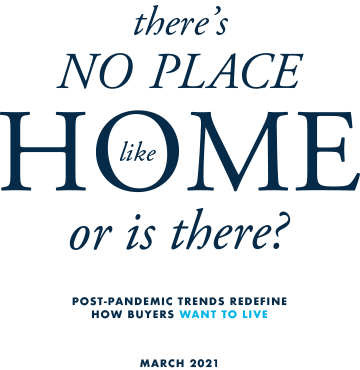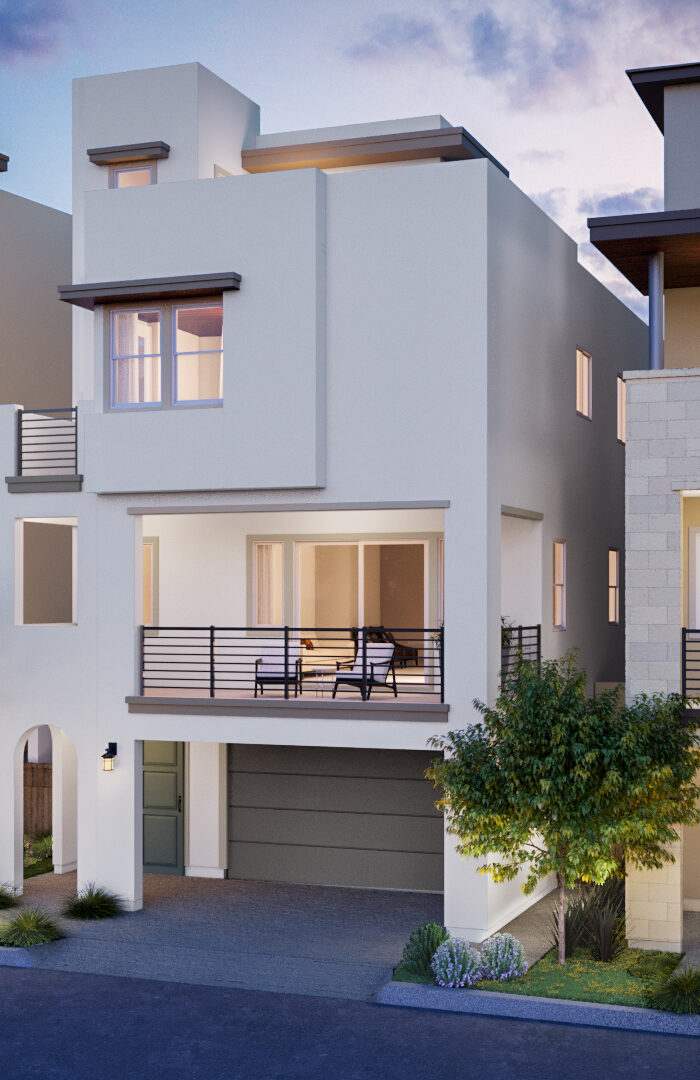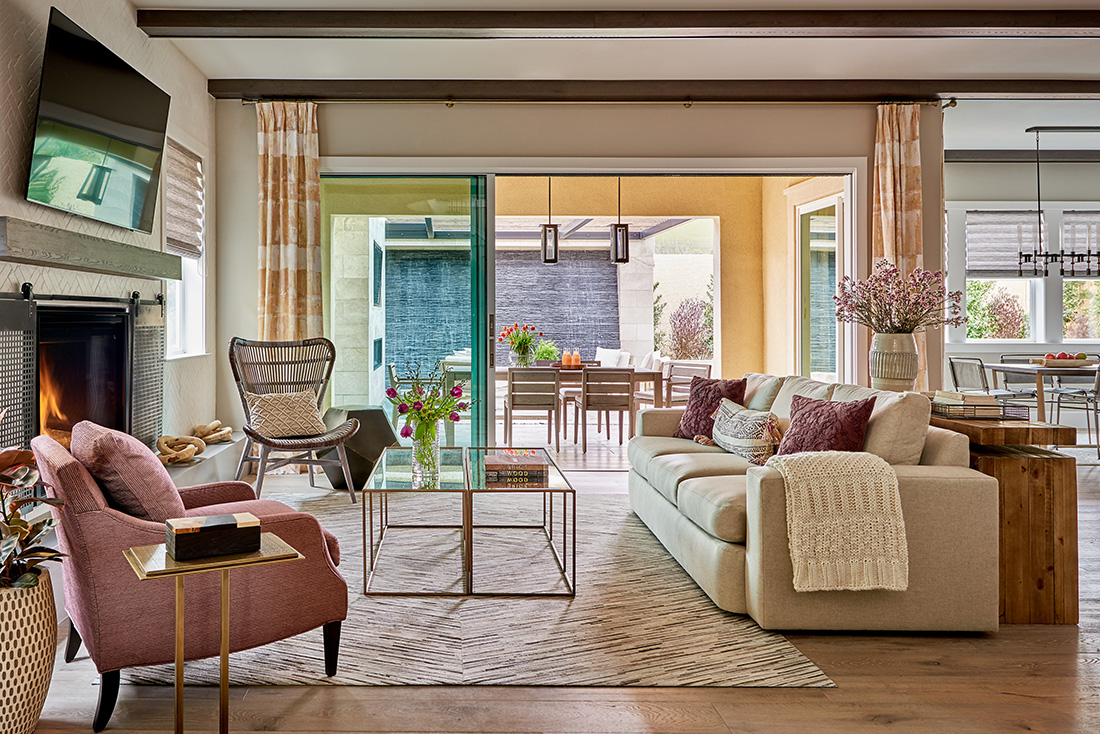

We're all aware of COVID, quarantines, masks, medications and mortality rates. But there's a lot more going on than that. Today, things are evolving fast, and nothing is changing faster than the nature of 'home.' More people than ever are doing more work than ever from home. This is fundamentally changing where people choose to live, how they choose to live, and what they physically expect from the place they live. It presents an enormous opportunity for builders and developers. Those who understand these trends and their trajectories and are nimble enough to get out in front of them will be the biggest winners.
THE GEOGRAPHY OF WORKING REMOTELY
Options loom for new locales
Working remotely has altered the geography of work and shattered the traditional notions of commuting. And many of these changes are going to be permanent.
The NAHB found that 29% of people now work from home. Of those, 61% believe they will continue to work at home post-vaccine.1
These buyers and renters don't feel as tethered to their workplaces anymore. And they may only have to commute once in a while. The buyer or renter who now lives in Chicago, could decide to live in Lake Geneva, Wisconsin, Harbor Country, Michigan, or rural Indiana. They might be more than willing to make a longer, less frequent commute in exchange for much lower rents and house payments. In fact, many of them already are.
Take the mountain town of Truckee, California near Lake Tahoe. NPR reports that their housing market,
where prices are one-third of those of San Francisco, has soared 23% during the coronavirus pandemic.2
Then there are the people who will be working exclusively at home. They have a different set of options. They can live anywhere! 'Zoom Towns' like Park City, Aspen, Cape Cod or the Hamptons are just the beginning of the possibilities.
Other municipalities are also trying to capitalize on the trend. Tulsa Remote is offering out-of-state and self-employed workers $10,000 grants and other inducements to move to Tulsa, Oklahoma to give it a try for a year.
As the pandemic sharpens the workforce's focus on proximity and location, we've seen the rise of '15-minute neighborhoods.' In these enclaves, all shopping, recreation, cultural and
work needs are within a 15-minute walk or bicycle ride from home.
According to PWC, New York City's housing inventory reached its highest level in a decade in the latter part of 2020.3 It also noted that the share of suburban household growth will rise to almost 80% in the years ahead. At the center of that surge will be those aged 30 to 49 who are starting or expanding families. Their numbers are slated to grow by 8.4 million this decade.
But that doesn’t mean an end to the quest for the vibrant, eclectic renting lifestyles offered in cities. With rental prices falling in places like San Francisco, New York City, Chicago and other large cities, young people, particularly those in high-tech and artistic fields, will flock to urban apartments that were once beyond their financial grasp.
'People who work at home can live just about anywhere. Designing solutions that meet and exceed wide-ranging preferences is critical to success.'
— Mary Cook

Convenience, companionship, caregiving and cost-cutting are galvanizing a surge in multi-generational living.
'Multi-generational households have rapidly increased. With 1 in 5 Americans now living as a multi-generational family, design solutions that deliver privacy and functionality will clearly outperform.'
SHIFTS IN FAMILY MAKEUP
AND THEIR NEEDS
In the last year, millions of parents took on a role they never anticipated: teaching assistant. Parents quickly learned that there's a big difference between 'helping your child with her homework,' and becoming a home-school 'administrator.' Incorporating a home classroom is becoming a must.
The number of multi-generational households is also on the rise, and it's not just aging parents and in-laws. As many as 41% of Americans buying a home are including an elderly parent or an adult child, according to a survey conducted by John Burns Real Estate Consulting.4 Multi-generational homes offer plenty of benefits. In addition to everyone getting to spend more time together, everyone tends to save money, and it has the potential to improve health outcomes.
As buyers and renters choose destinations and suburbs for quality of life and amenities, developers will want to make sure their designs are the fusion of what that customer needs and what the locale has to offer. But, in light of the rising costs of materials and labor, it's going to require more finesse, vision and frankly, talent, to deliver the level of innovation and quality that these savvy customers want.
CHANGED LIFESTYLES PUSH THE BOUNDARIES OF HOME SPACES
Live + work + play together and apart
The Multi-Kitchen
Before the pandemic, the kitchen was the heart of the home. It still is. But today, it's more central than ever. Cooking, eating, gathering, meeting, crafting and doing homework make the kitchen the most important room in the house.
This expansion of the kitchen's role led Whirlpool to design its Invisible Kitchen concept. Using color and innovative design, the appliances are so seamlessly integrated into the décor, that the kitchen becomes an extension of the family room. “Black Stainless” and “Sunset Bronze” finishes incorporate champagne hues and warmer tones, helping them blend-in invisibly with kitchen cabinets.
If 'bunkering habits' continue post-COVID and snow days become remote days for school and work, kitchens may well need to grow in size and functionality to accommodate even more activities. We could certainly use more storage for the giant air fryer we bought during the COVID cooking frenzy.

'No room in the home hosts more activities than the kitchen. While quarantining, new home buyers became acutely aware of what they now want. Successful designs will match this expanded vision of the kitchen's function in the home.'
Flexible, Virtual Pockets
As companies, educators, and students evaluate the productivity and effectiveness of virtual platforms used over the past year, it's anticipated that while platforms improve and people become more comfortable, many remote practices will continue in part. Dedicated, organized and highly functional spaces will be a top priority for both learners and workers needing more than just a place to open a laptop. These spaces must offer privacy, connectivity, flexibility and adaptability to accommodate life stages. And with predictions of future viruses, it looks like they're here to stay.
Versatile pocket rooms designed not only for work, but for training, e-learning and many other uses will bring the greatest value. These spaces can also be dedicated to fitness, hobbies or pets. The key will be understanding your market, identifying its needs and meeting them.
The Outdoors In
Even before the pandemic, the physical and mental health benefits of being outside were undisputed. There was a push to make outdoor areas more useful and accommodating, functioning as nine-month or year-round spaces for entertaining, working, grilling, exercising and relaxing.
In addition to the obvious benefits, when these outdoor spaces are creatively designed with both passive and active areas, they can provide something for everyone. They can inspire calmness and meditation, or a rowdy game of bags.
'Well-designed outdoor spaces must have the right mix of passive and active functionality for the greatest impact.'
But the benefits of 'green' spaces aren't limited to the great outdoors. 'Green Walls,' Biophilic Design or 'Living Walls' are used in the building industry to increase residents' connection to nature both in the home and in amenity areas. It is even said they can have healing effects on the body, mind and soul.
'Consumers want transparency, sustainability and health and wellness. When it comes to making home buying decisions, they're willing to pay extra for them.'
BUILDING FOR HEALTH AND SUSTAINABILITY
Home buyers increasingly want evidence of transparency, sustainability and health and wellness in every corner of home development and construction. In response, the industry has launched many new initiatives that ensure buildings are designed to help residents thrive while also safeguarding the environment.
For example, the WELL Building standard measures, certifies and monitors features of the built environment that improve health and human experience. Homebuilder Taylor Morrison recently unveiled TM LiveWell, which promotes safer paint, healthier air and cleaner water in its new homes. These are the kinds of assurances health minded buyers and renters are looking for.
Leading builders and developers recognize the full range of buyers' health and wellness priorities including:
- Fresh air
- Purified water
- Contaminant free, sustainable materials
- Abundant natural light
- Low VOC finishes
- Quality air filtration and ventilation
- Touchless everything
- UV disinfecting
- Antimicrobial surfaces
In each of these areas, buyers expect the latest technology to create the environment they seek and they're willing to pay more to get it.
Passive Design
One thing that hasn't changed is the evolution of the basic standards of construction. Never-ending advances in insulation, air exchange, eaves, and windows and doors result in quantifiable levels of energy efficiency, as well as comfort, air quality and structural resiliency.
According to EnergyPost.eu, these passive features have been shown to use up to 90% less energy than traditional construction. And consumers love them.
AFFORDABLE, INNOVATIVE DESIGN
Today's homebuyers and renters want quality over quantity, simplicity over complexity and timeless beauty over the latest fad. They're worried that the home design and finishes they choose today will be out of style tomorrow. Quality, authentic materials are the ones that will not require replacing, repairing or updating any time soon.
'Great design isn't about who spends the most money. It's about who spends the money best.'
Great design isn't about choosing colors that look nice together, arranging furniture and sticking a plant in the corner. It's about truly and profoundly understanding how design can motivate, soothe, relax, inspire and even heal the people who experience it. It's about creating environments that actually perform for you.
It's knowing how to strike that delicate balance between cost-efficiency and superior performance.

'Timely, targeted market knowledge drives innovative design solutions.'
It's about maximizing what we call the Return on Environment (R.O.E.℠). To achieve it, you have to know what questions to ask. You must do a deep dive into the demographics, psychographics and motivations of the target market. Then, and only then, can you respond with design solutions that will check every box and flip every switch for that consumer.
When you achieve that in a model home, a model apartment, or in uncommonly inviting multi-family common areas and amenities, you’ll have designs that really work for you. They'll generate rich returns for everyone: from the developers and builders to the people who live in them.
It's not an accident. It's not a coincidence. It's thoroughly researched, meticulously planned and flawlessly executed.
We call it Living Better by Design℠ because that's exactly what it is.
THE BOTTOM LINE
The paradigm of 'home,' has shifted. Far more than the tradition of it being 'your castle,' it's now an office, a school, fitness center, nature retreat, gathering place, sanctuary and corporate headquarters.
That's asking a lot of a home design. As a result, it's more important than ever to bring as much certainty as possible to every investment.
It will take timely, targeted market knowledge, accurate trend analysis, insightful innovation updates and a team that can interpret them and put the results into practice.
GET THE PDF VERSION HERE

MEET THE AUTHOR
Mary Cook, Founder and President
Mary Cook is the founder and president of Mary Cook Associates (MCA), a fully integrated interior architecture and design firm nationally known for creating innovative interiors that are targeted to market demands, designed to increase property value and deliver measurable returns. The firm's projects for premier owners and developers of real estate include multi-family, model homes, student living, senior living, clubhouses, restaurants, and hospitality environments. Under Mary's leadership, the work MCA produces emphasizes functionality, showcases possibilities, and accelerates sales and leasing. Currently celebrating its 35th anniversary, the firm continues its national presence with award-winning work that spans 36 states.
Join us in the coming weeks as we delve into the changing home
landscape in our series of white papers that will provide fresh
perspectives and innovative solutions.

1 'Most Teleworkers Expect to Continue At Home, Even After COVID Vaccine,' Rose Quint, NAHB, October 16, 2020, https://eyeonhousing.org/2020/10/most-teleworkers-expect-to-continue-at-home-even-after-covid-vaccine/
2 'Zoom Towns And The New Housing Market For The 2 Americas,' Greg Rosalsky, NPR, September 8, 2020, https://www.npr.org/sections/money/2020/09/08/909680016/zoom-towns-and-the-new-housing-market-for-the-2-americas
3 'Great American Exodus: What the move to the suburbs means for the real estate market,' R. Byron Carlock, Jr., PwC, December 1, 2020, https://www.pwc.com/us/en/industries/financial-services/research-institute/blog/move-to-the-suburbs-real-estate-market.html
4 Trends in the Housing Market,' Tracy Velt, RT Real Trends, September 5, 2020, https://www.realtrends.com/blog/multigenerational-trends-in-the-housing-market/









